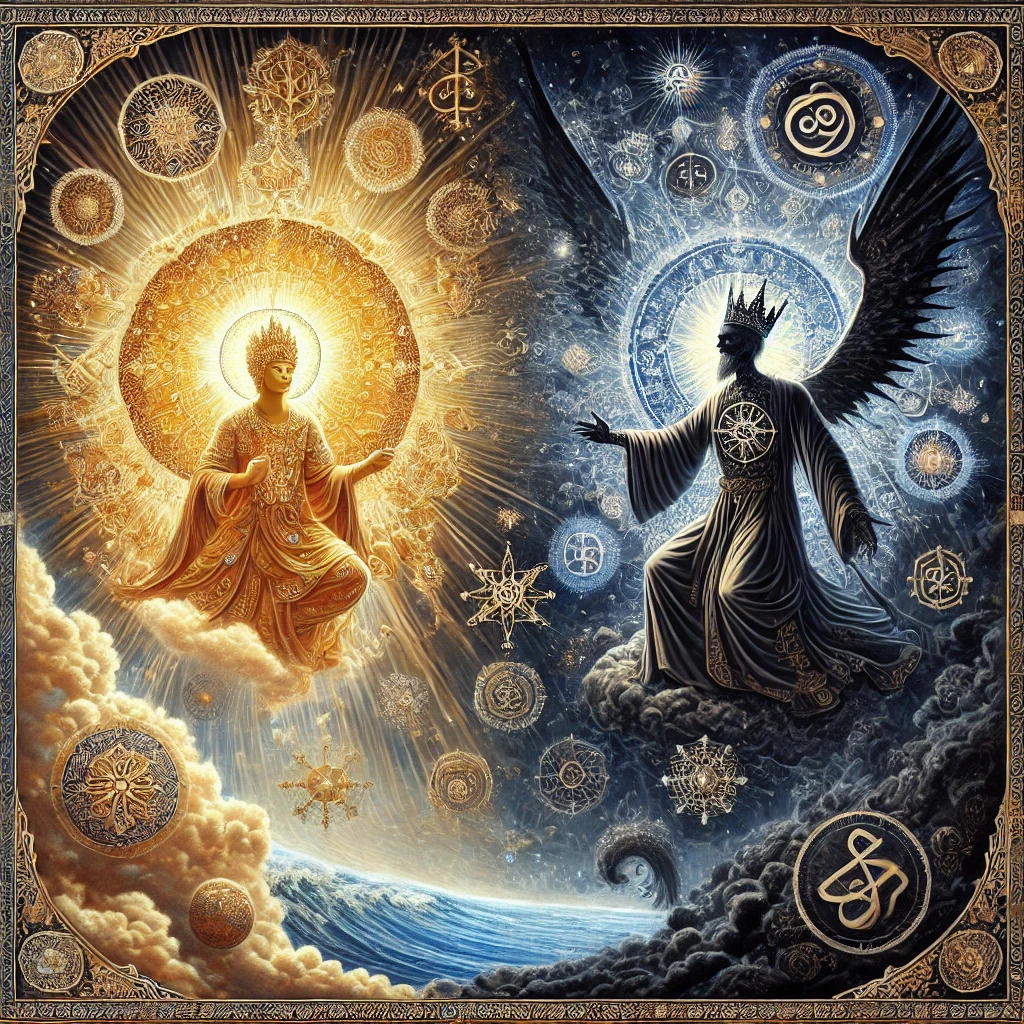Manichaeism was once one of the most widespread religions in the ancient world. It emerged in the 3rd century CE and spread from the Roman Empire to China. It was a dualistic faith that saw reality as a cosmic battle between good and evil. Though nearly extinct today, its ideas still influence philosophy, theology, and even pop culture.
Who Was Mani?
Mani, the founder of Manichaeism, was born in Persia (modern-day Iran) in the 3rd century CE. He claimed to be the final prophet in a line that included Buddha, Zoroaster, and Jesus. Mani believed he had received divine revelation to unify all religions under one ultimate truth. His teachings blended elements of Zoroastrianism, Christianity, and Buddhism.
The Core Belief: Cosmic Dualism
Manichaeism is fundamentally dualistic, meaning it sees existence as a battle between two opposing forces. On one side is the Kingdom of Light, ruled by a good, benevolent deity. On the other is the Kingdom of Darkness, led by an evil, chaotic force. Humanity is caught between these two realms, with our souls belonging to the light but trapped in material bodies tainted by darkness.
The Myth of Creation
According to Manichaean cosmology, the universe was created as a result of conflict. The forces of darkness invaded the realm of light, leading to a cosmic struggle. To save the light particles trapped in darkness, a divine figure known as the Primal Man sacrificed himself. The material world was later formed as a way to purify and free the trapped light.
The Role of Humanity
In Manichaean thought, humans play a key role in the cosmic struggle. Each person possesses a divine spark of light trapped within a body of darkness. The goal of human existence is to purify this light through wisdom and righteous living. Upon death, if one has followed the true teachings, the soul ascends back to the realm of light.
The Three Seals: Purity of Speech, Thought, and Action
Mani’s followers were expected to follow strict ethical guidelines. The religion emphasized three core virtues: truthful speech, pure thoughts, and righteous actions. These were known as the Three Seals and were necessary for salvation. Strict Manichaeans, known as the Elect, followed rigorous ascetic practices, while lay followers, called Hearers, had a more relaxed lifestyle.
The Spread and Persecution of Manichaeism
Manichaeism spread rapidly across the ancient world. It reached the Roman Empire, North Africa, Central Asia, and even China along the Silk Road. However, it was also heavily persecuted by Christian, Zoroastrian, and Islamic authorities. By the Middle Ages, it had largely disappeared, though remnants of its ideas survived in later religious movements.
Manichaeism and Christianity
Manichaeism was considered a major rival to early Christianity. Church leaders such as St. Augustine, who was a Manichaean before converting to Christianity, wrote extensively against it. The idea of cosmic dualism influenced later Christian notions of good versus evil. Some scholars argue that Manichaean ideas subtly shaped Christian heresies such as Catharism in medieval Europe.
Influence on Gnosticism
Manichaeism shared many similarities with Gnosticism, another dualistic belief system. Both saw the material world as corrupt and the soul as something that needed liberation. However, Mani presented a more structured cosmic myth compared to the fragmented beliefs of the Gnostics. Despite persecution, elements of Manichaean thought survived within Gnostic sects for centuries.
Manichaeism in the Islamic World
Under early Islamic rule, Manichaeans were tolerated as “People of the Book.” However, as Islamic orthodoxy solidified, they were branded as heretics. The Abbasid Caliphate cracked down on them, leading to the final decline of Manichaeism in the Middle East. By the 10th century, it had virtually vanished from the Islamic world.
Manichaeism in China
China became one of the last strongholds of Manichaeism. It was introduced through Persian traders along the Silk Road and found a following among the Tang and Song dynasties. Chinese Manichaeism blended with Buddhist and Taoist elements, creating a unique fusion of traditions. Despite waves of suppression, echoes of Manichaean thought persisted in some Taoist sects.
The Decline and Disappearance of Manichaeism
By the late Middle Ages, Manichaeism had been wiped out as an organized religion. It suffered from continuous persecution, the rise of Islam, and the dominance of Christianity. Unlike other world religions, it left little institutional legacy, though its influence can be seen in later dualistic movements. Today, most of what we know about it comes from ancient texts rediscovered by historians.
Manichaean Themes in Modern Culture
Even though the religion itself is extinct, Manichaean ideas continue to shape modern thought. The concept of absolute good versus absolute evil is a staple of literature, film, and philosophy. Some scholars see echoes of Manichaean dualism in Star Wars, superhero stories, and even political ideologies. The idea of the world as a battleground between light and dark remains deeply ingrained in human psychology.
Why Does Manichaeism Matter Today?
Manichaeism offers a unique perspective on human existence. It presents life as a cosmic struggle, urging individuals to align with the forces of light. While modern science and philosophy no longer see the world in purely dualistic terms, the idea of good and evil remains central to human morality. Understanding Manichaeism helps us see how ancient worldviews continue to shape modern belief systems.
Final Thoughts
Manichaeism was once a dominant religion that influenced vast regions of the world. Though it has vanished as a formal faith, its core ideas still resonate. The battle between light and darkness, truth and falsehood, remains a compelling narrative across cultures. In many ways, Manichaeism never truly disappeared—it just evolved into new forms.




